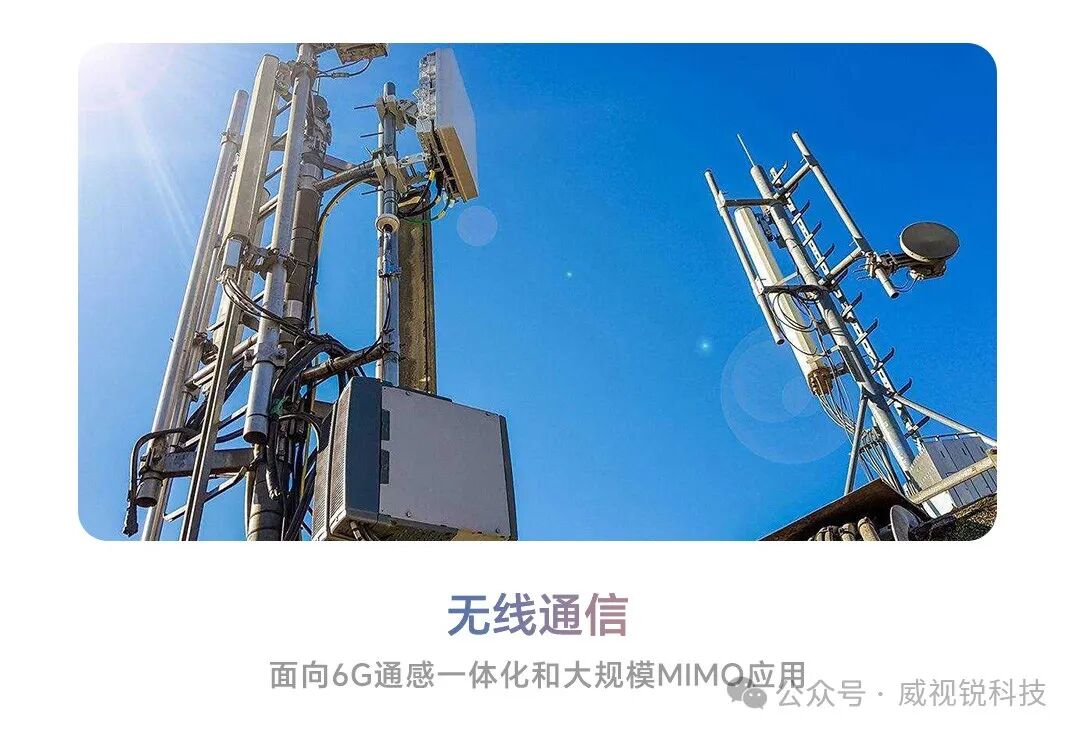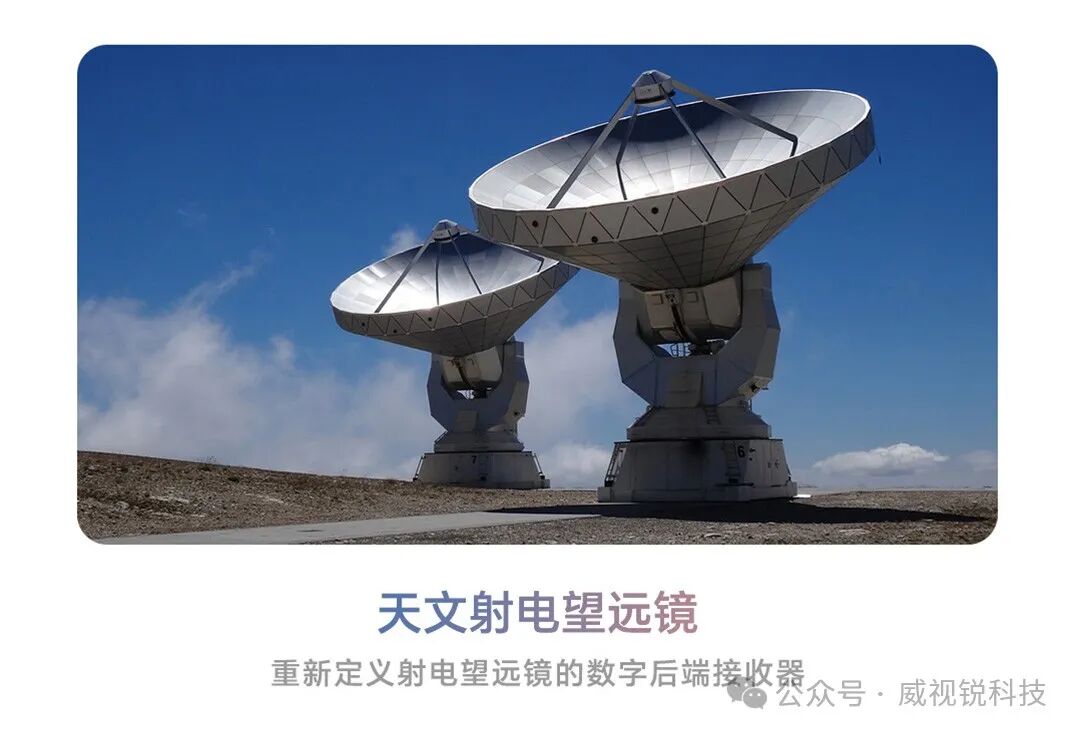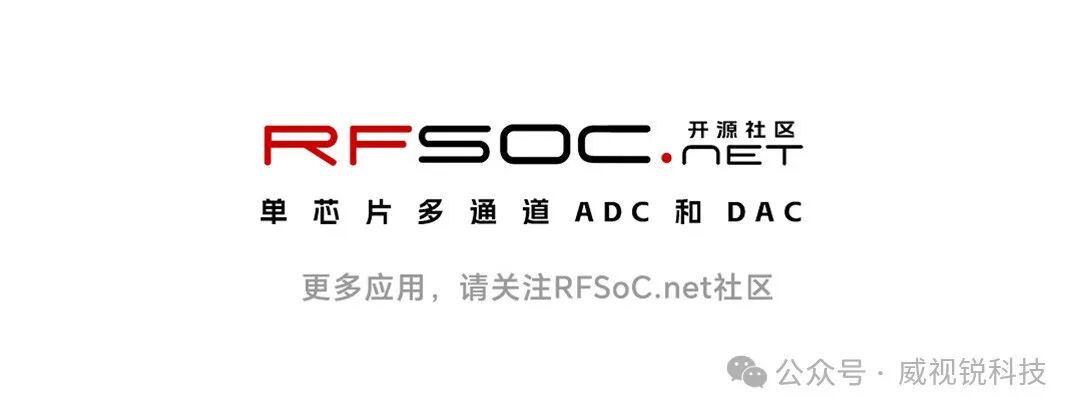
The RFSoM216 module offers the highest number of RF channels in the industry, equipped with a 16-channel RF Digital-to-Analog Converter (RF-DAC) with a sampling rate of 9.85 GSPS and a 16-channel RF Analog-to-Digital Converter (RF-ADC) with a sampling rate of 2.5 GSPS, enabling the entire RF signal chain to achieve the highest signal processing bandwidth.
Integrated with ARM® Cortex-A53 and dual ARM® Cortex-R5 processors, and equipped with high-bandwidth DDR4 memory, it constructs a multi-channel data conversion and processing solution. In addition to the resources of the RF System-on-Chip (RFSoC), this module system also features:
· 64-bit programmable logic (PL) DDR4 memory and 64-bit processing system (PS) DDR4 memory with Error Correction Code (ECC) functionality
· Integrated ultra-low noise programmable RF Phase-Locked Loop (RF PLL)
· Three 400-pin board-to-board connectors
· 16 Analog-to-Digital Converter (ADC) channels with a maximum sampling rate of 2.5 GSPS
· 16 Digital-to-Analog Converter (DAC) channels with a maximum sampling rate of 10 GSPS
· 16 GTY transceivers with a maximum rate of 32.75 Gbps
· 192 Field-Programmable Gate Array (FPGA) input/output interfaces
Typical Application Scenarios

RFSoC integrates multiple functions such as RF front-end, Analog-to-Digital Converters (ADC), Digital-to-Analog Converters (DAC), and processors onto a single chip. In 6G sensing applications, this high level of integration helps reduce the size and weight of devices, facilitating deployment in various terminal devices and base stations, especially for space-constrained IoT devices or mobile terminals, better meeting their miniaturization and lightweight design requirements, and reducing system complexity.
Communication and sensing integration: 6G sensing applications emphasize the deep integration of communication and sensing functions. RFSoC can simultaneously process communication and sensing signals, achieving collaborative operation of both functions. For example, while communicating, it can utilize the scattering characteristics of communication signals for environmental sensing, or during the sensing of targets, transmit and share sensing information through communication links, thus realizing the integration of communication and sensing functions.
Multi-band and multi-mode support: 6G communication will cover multiple frequency bands, including millimeter waves, terahertz, and other high-frequency bands, while sensing functions may also use different frequency bands and signal modes. RFSoC has the capability to support multi-band and multi-mode signal processing, allowing flexible switching and adaptation to different frequency bands and signal types, meeting the diverse needs of 6G sensing applications in complex spectral environments.

RFSoC integrates RF transceiver front-end, Analog-to-Digital Converters (ADC), Digital-to-Analog Converters (DAC), Digital Signal Processing (DSP), and Field-Programmable Gate Arrays (FPGA) into one unit, significantly reducing the size, weight, and power consumption of the system, while lowering system complexity, improving reliability, and reducing cable connections, which helps enhance radar range resolution and target detection accuracy.
The FPGA and DSP resources on the chip provide powerful digital signal processing capabilities. They can perform real-time filtering, amplification, pulse compression, Moving Target Indication (MTI), Synthetic Aperture Radar (SAR) imaging, and other complex signal processing algorithms on radar echo signals, enabling quick and accurate extraction of target information while suppressing clutter and interference, thus improving the performance and reliability of radar systems.
Phased array radars typically require multiple channels to achieve electronic scanning and beam shaping. RFSoC provides a compact multi-channel solution for phased array radars. By precisely controlling the amplitude and phase of the signal for each channel, it can achieve the beam shaping function of phased array radars. Utilizing its programmable digital signal processing capabilities, it can flexibly generate various beam shapes, such as narrow beams, wide beams, and multi-beams, to meet different detection and tracking needs, while improving beam pointing accuracy and sidelobe suppression performance.

RFSoC is suitable as a control module for quantum computing, with the following advantages:
High-precision control: Quantum computing requires precise manipulation and measurement of qubits. RFSoC integrates high-speed DACs and ADCs, capable of generating high-precision microwave signals to provide accurate control pulses for qubits, enabling precise operations on quantum states. For example, by generating microwave signals of specific frequency, phase, and amplitude through the DAC, it can accurately control the flipping and entanglement of superconducting qubits.
Multi-channel integration: Quantum computers typically contain multiple qubits, requiring multiple channels for independent control and measurement of different qubits. RFSoC can integrate multiple DAC and ADC channels on a single chip, with some RFSoC chips integrating at least 8 DACs and corresponding ADC channels, meeting the control needs of multi-qubit systems, reducing system complexity and cost.
High-speed data processing capability: During quantum computing, a large amount of measurement data and control information needs to be processed in real-time. RFSoC is equipped with powerful processing units and high-speed interface units, such as ARM multi-core processors and rich programmable logic resources, enabling fast data processing and computation, achieving real-time monitoring and feedback control of qubits, thus improving the efficiency and accuracy of quantum computing.
Scalability: With the development of quantum computing technology, the number of qubits continues to increase. The architecture of RFSoC has a certain degree of scalability, allowing for cascading multiple RFSoC chips or integrating more channels to meet the demands of large-scale quantum computers.

RFSoC integrates RF data converters, programmable logic, and microcontrollers to provide real-time signal processing, digitization, high-speed interfaces, and software control for radio astronomy backends. This highly integrated and energy-efficient RFSoC simplifies the design of astronomical backend systems, streamlining architecture and reducing hardware development costs. The Zynq UltraScale+ RFSoC offers high-performance analog-to-digital conversion, real-time signal processing capabilities, and extensive bandwidth coverage, making it an ideal solution for designing radio telescope backend receivers.
